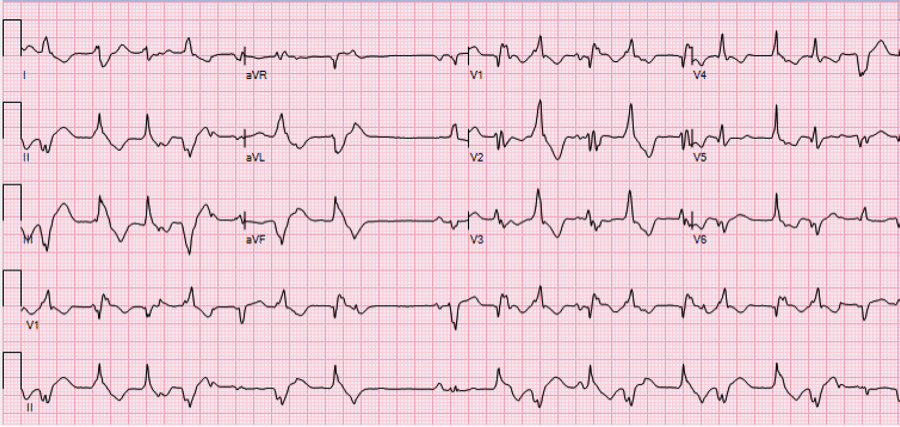- Rare form of ventricular tachycardia.
- Characterized as alternating axis and morphology of VT
- Mechanism of bidirectional VT is believed to be the result of two different sites in the distal His Purkinje system or ventricle where delayed afterdepolarization (DAD) develops at different heart rate thresholds. This results in a “Ping-Pong” mechanism that causes reciprocating bigeminy between these two ventricular foci.
Causes
- Digoxin toxicity
- CPVT (Catecholaminergic Polymorphic Ventricular Tachycardia)
- Myocarditis
Treatment
- Consider Cardioversion.
- Treat underlying cause and reverse toxic agent (Digoxin toxicity).
- Lidocaine may be a better antiarrhythmic treatment option for bidirectional VT because it is better at suppressing DAD-related activity by blocking voltage-gated sodium channels.
References
Baher A.A., et al. (2011) Bidirectional ventricular tachycardia: ping pong in the His-Purkinje system. Heart Rhythm. Apr;8(4):599-605.
Issa Z., et al. Clinical Arrhythmology and Electrophysiology: A Companion to Braunwald’s Heart Disease, 2nd Edition. Chapter 3: Electrophysiological Mechanisms of Cardiac Arrhythmias.
Pu J., et al. (1998) Lidocaine action on Na+ currents in ventricular myocytes from the epicardial border zone of the infarcted heart. Circ Res. Aug 24;83(4):431-40.


